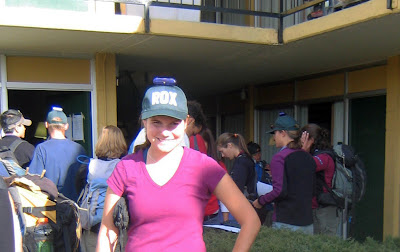First of all, I want to apologize to my readers that blogging here on Georneys has been somewhat light over the past several weeks. There are a couple of reasons why.
The first reason is that my work as a geologist for a marine gold exploration company has been very busy. Work has been going very well, but as a new industry geologist I’ve been working hard to learn as much as possible and keep up with the work load. However, I’m really enjoying my job and feel extremely grateful to have found a good place for me to do what I love– geology.
The second reason is that a few weeks ago I was home alone in Cape Town, South Africa when robbers brazenly broke into the flat. I was not physically harmed, but I lost my laptop and was quite shaken by the experience. So, I’ve been resting and recovering. I had trouble sleeping for awhile, but I am slowly but surely returning to normal. My husband and I are in the process of installing some additional security– an unfortunate necessity here in South Africa. We’ve also bought extra hard drives and have signed up for on-line back-up (hard drive back-ups don’t help when the thieves steal hard drives, too!). I had a full computer back-up (carefully hidden away!) that was a couple of months old, but I did lose some vacation and geology pictures and a few other things. Everyone, please remember to back up your computers often! It’s heartbreaking to lose things when your laptop is stolen or when it crashes.
Second of all, I want to give you a preview of something to come here on Georneys: pictures and some guest posts by my husband Jackie, who is currently pursuing his masters degree in Exploration Geology at Rhodes University in Grahamstown, South Africa. Jackie is working on his degree part-time over 2-3 years. There are two field trips associated with the degree, and Jackie is currently on the first field trip. He’s been visiting some amazing geological places throughout South Africa and has been taking plenty of pictures.
Below are a few pictures from Jackie’s field trip. Captions are courtesy of Jackie. These pictures are just from a BlackBerry phone– when my husband returns in a week or so, he’ll download the pictures from the proper camera. I can’t wait to see those!





